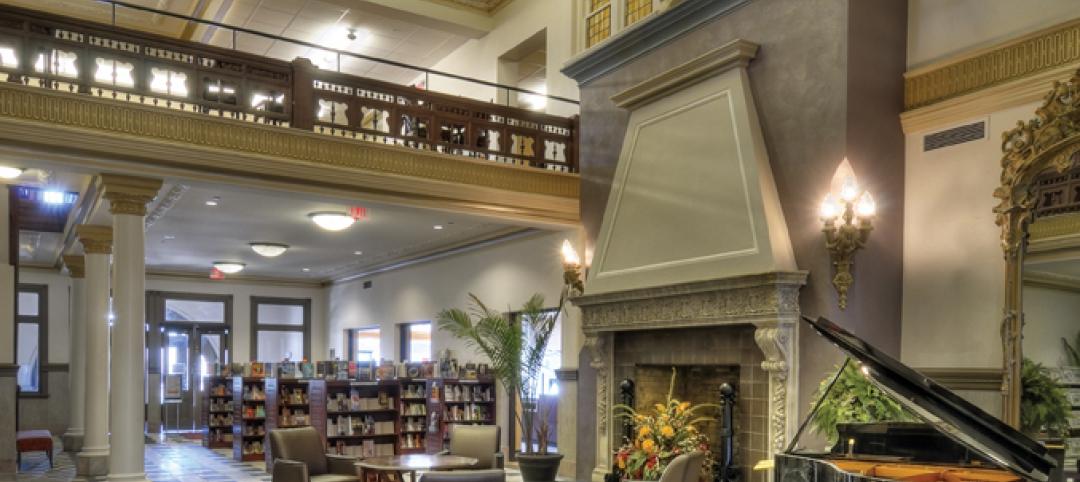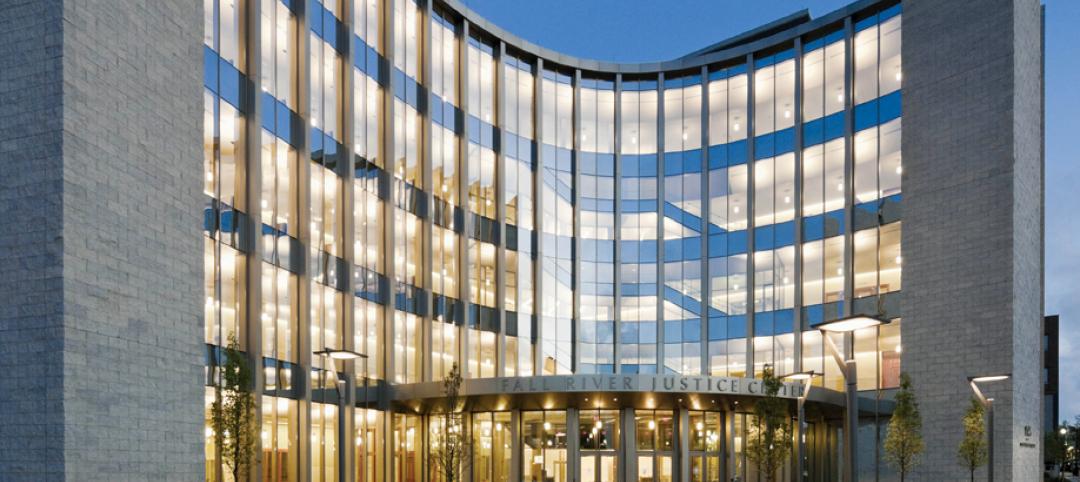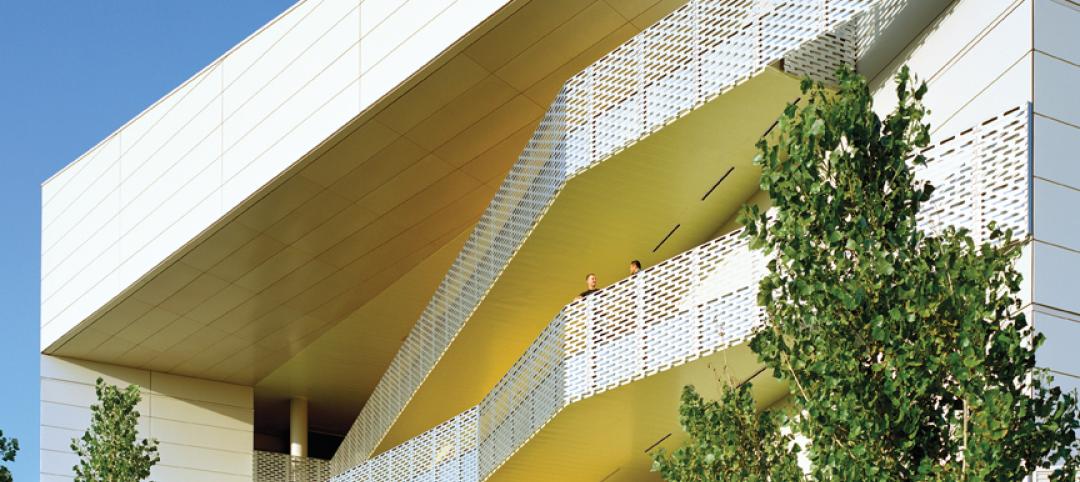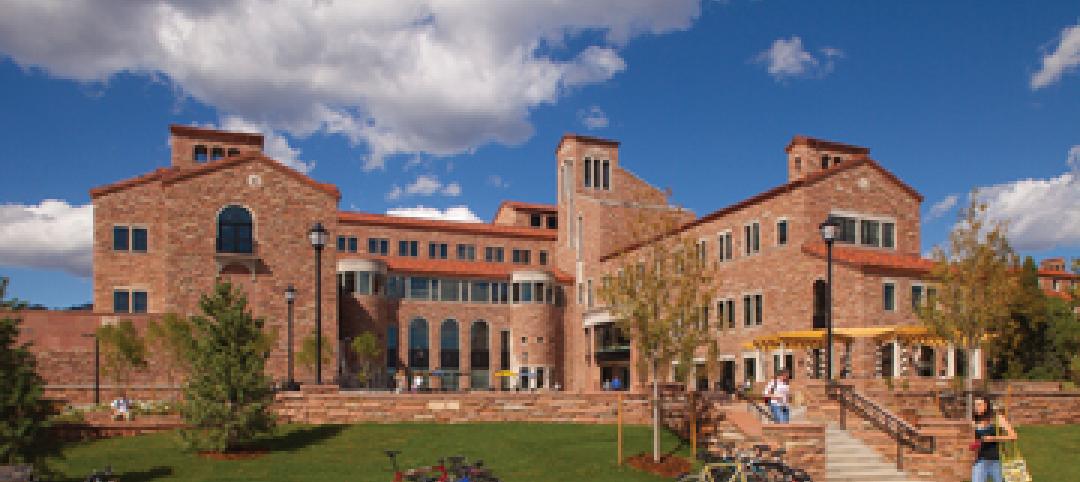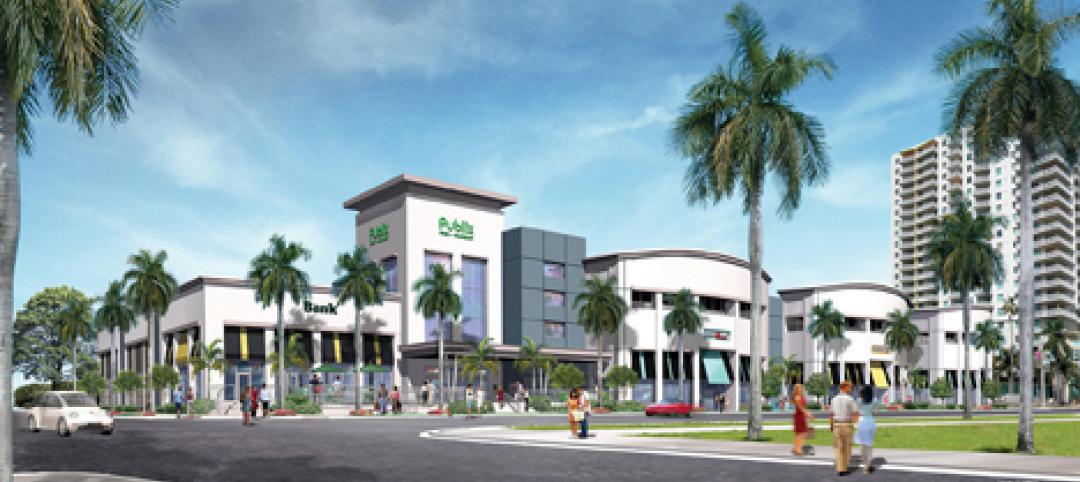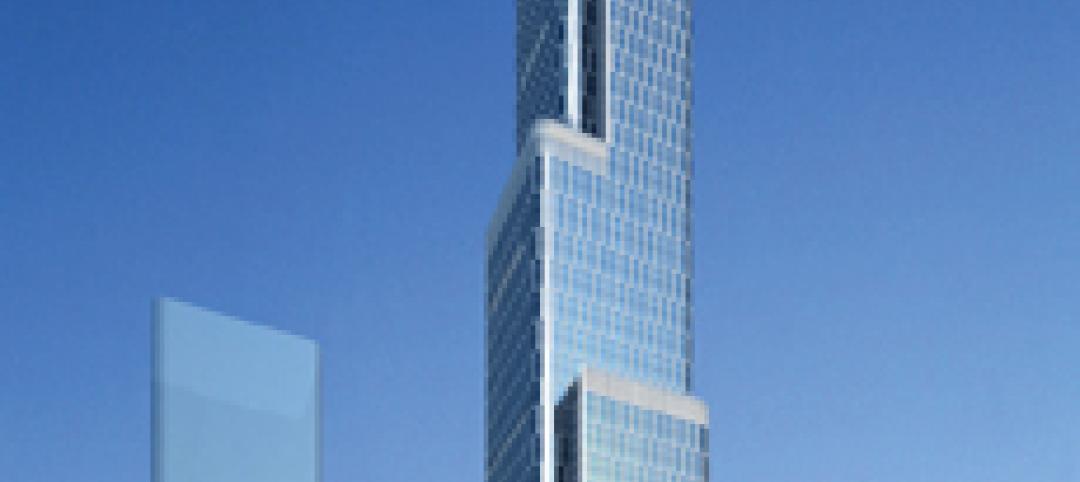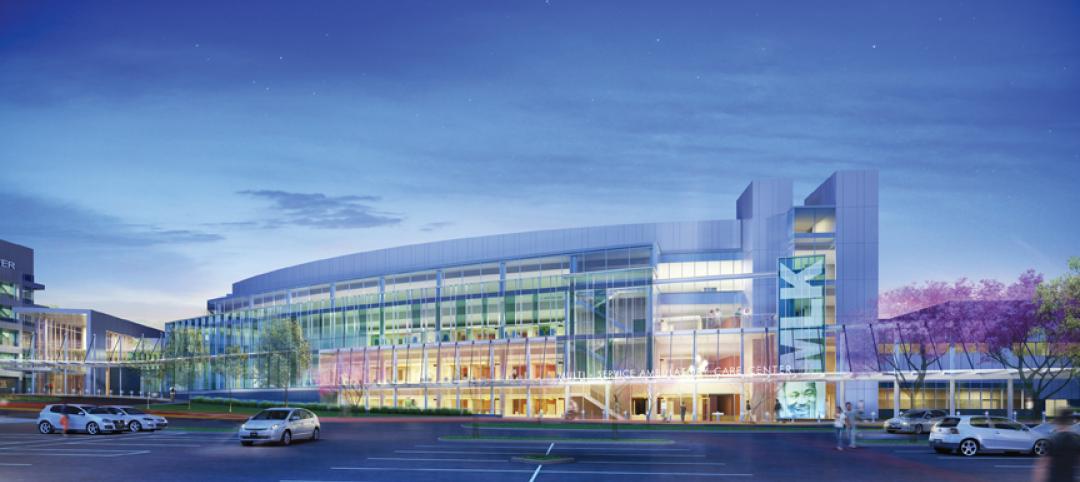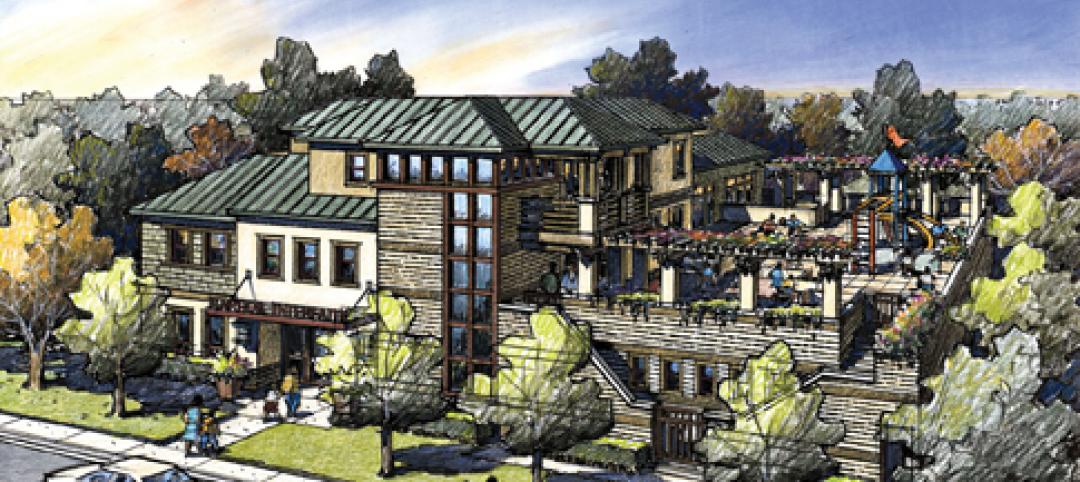The 1939 Hinman Research Building on the campus of the Georgia Institute of Technology, in Atlanta, is undergoing an $8.5 million renovation to adapt and expand its capacity to serve the program objectives of the university’s College of Architecture. The renovation, which is being designed using building information modeling (BIM) and related software systems, will also produce flexible and functional interior space that encourages interaction and collaboration by architecture students and faculty.
The 35,000-sf Hinman Building was last renovated in 1951. As a result, the project, which is expected to achieve LEED-EB Gold certification from the U.S. Green Building Council, required significant interior improvement to create adequate studio and classroom space for the architecture school. The scope of work for the general contractor on the design-build project, the Dallas-based Beck Group, included demolition and abatement of the existing interior and completion of the new interior finishes.
The design for the reconstructed building, by the architecture firms Office da of Boston (design architect) and Lord Aeck & Sargent of Atlanta (architect of record), used elaborate interior millwork to create the kind of flexible and functional spaces that the College of Architecture desired. Not only was it necessary to manufacture the thousands of new interior millwork pieces at reasonable cost and within the schedule. They also had to fit the tight tolerances at their interfaces with the existing structure, as mandated by the design (which was modeled in Autodesk Revit). To accomplish this difficult task, the designers used Rhino 3D, a design tool that uses NURBS, or non-uniform rational b-splines, to create curvilinear pieces and other sophisticated shapes that other 3D design software can’t touch.
“We generally use Rhino for studying design and generating freeform geometry on most of our projects,” said Tom Beresford, project architect for Office da on the Hinman Building project. Beresford said his firm had also used the software in previous work involving custom millwork packages.
The 3D architectural models worked for design purposes, but once the Beck Group got them on site they noticed several existing conditions that made installation difficult. In particular, the staircases in the post-demolition interior of the building were mostly in the wrong locations.
“Dealing with unknowns was adding contingencies,” said Josh Oakley, BIM manager for the Beck Group. “The price of installation was starting to escalate because it would take time to figure out how to install all of these pieces, and it was getting to the point that stairs and millwork may have had to be value-engineered out. Our field people were not used to spending days on installation.”
Oakley and his Beck colleagues—notably assistant project manager Frank Fralick and project engineer Jesse Plata—came up with a plan to import the geometries of the existing Rhino models into Autodesk Inventor and then transfer that data to EdgeCAM, a computer-aided machining program that can apply CNC tooling paths to the model geometry. With these paths the model information could be used to create G code, a series of numbers used to program a CNC milling machine to create the thousands of millwork pieces needed for the project. They hoped this process could meet the $547,000 millwork budget and deliver it on time.
“If there was a way to make these models only once, we were going to do it,” Oakley said. “We needed to mitigate risk and meet budget.”
Oakley and Fralick also took a point-cloud scan of the preconstruction Hinman Building and put that information into their Autodesk Revit and Rhino models to ensure accuracy in the as-built model. In a matter of one day all the existing conditions were imported into the design model.
This workflow also allowed the Building Team to create animated DWF files as instructions for the installation of each piece of millwork from the Autodesk Inventor model. These “IKEA-like” graphical representations showed how each piece fit and where holes needed to be drilled to create the finished, ornate millwork. Oakley said having these detailed animations allowed Beck to reduce the time needed to put together the thousands of unlabeled pieces of millwork and keep the project on track and under budget.
The next step was finding a CNC fabricator who could create the custom millwork pieces using CNC machines. The modified workflow made it likely that using a traditional commercial project fabricator would be out of the question. The Building Team would also need space to store the thousands of pieces necessary to create the new interior millwork. The scope of work and the storage problem would require a different approach entirely.
The Beck team approached Amir Nejad, president and CEO of residential custom cabinetmaker Royal Custom Cabinets in Norcross, Ga., a suburb of Atlanta, to take on the millwork project. Using Royal Custom’s CNC production capability, the fabrication process was quickly commoditized. The EdgeCAM data was easily fed into Royal Custom Cabinets’ four-axis router machines. The millwork pieces began rolling out and were stored in a 15,000-sf warehouse in Norcross that the Beck Group leased.
The millwork was recently completed, and the Beck Group will be returning $30,000 in a change order fund to owner Georgia Tech. The Building Team is using the same process to build custom furniture for the project, which is expected to be completed, with the rest of the interior fit-out, in time for the Hinman Building’s reopening in January.
Related Stories
| Feb 11, 2011
Former Richardson Romanesque hotel now houses books, not beds
The Piqua (Ohio) Public Library was once a late 19th-century hotel that sat vacant and deteriorating for years before a $12.3 million adaptive reuse project revitalized the 1891 building. The design team of PSA-Dewberry, MKC Associates, and historic preservation specialist Jeff Wray Associates collaborated on the restoration of the 80,000-sf Richardson Romanesque building, once known as the Fort Piqua Hotel. The team restored a mezzanine above the lobby and repaired historic windows, skylight, massive fireplace, and other historic details. The basement, with its low ceiling and stacked stone walls, was turned into a castle-like children’s center. The Piqua Historical Museum is also located within the building.
| Feb 11, 2011
Justice center on Fall River harbor serves up daylight, sustainable elements, including eucalyptus millwork
Located on historic South Main Street in Fall River, Mass., the Fall River Justice Center opened last fall to serve as the city’s Superior and District Courts building. The $85 million facility was designed by Boston-based Finegold Alexander + Associates Inc., with Dimeo Construction as CM and Arup as MEP. The 154,000-sf courthouse contains nine courtrooms, a law library, and a detention area. Most of the floors have the same ceiling height, which will makes them easier to reconfigure in the future as space needs change. Designed to achieve LEED Silver, the facility’s elliptical design offers abundant natural daylight and views of the harbor. Renewable eucalyptus millwork is one of the sustainable features.
| Feb 11, 2011
Research facility separates but also connects lab spaces
California State University, Northridge, consolidated its graduate and undergraduate biology and mathematics programs into one 90,000-sf research facility. Architect of record Cannon Design worked on the new Chaparral Hall, creating a four-story facility with two distinct spaces that separate research and teaching areas; these are linked by faculty offices to create collaborative spaces. The building houses wet research, teaching, and computational research labs, a 5,000-sf vivarium, classrooms, and administrative offices. A four-story outdoor lobby and plaza and an outdoor staircase provide orientation. A covered walkway links the new facility with the existing science complex. Saiful/Bouquet served as structural engineer, Bard, Rao + Athanas Consulting Engineers served as MEP, and Research Facilities Design was laboratory consultant.
| Feb 11, 2011
A feast of dining options at University of Colorado community center, but hold the buffalo stew
The University of Colorado, Boulder, cooked up something different with its new $84.4 million Center for Community building, whose 900-seat foodservice area consists of 12 micro-restaurants, each with its own food options and décor. Centerbrook Architects of Connecticut collaborated with Denver’s Davis Partnership Architects and foodservice designer Baker Group of Grand Rapids, Mich., on the 323,000-sf facility, which also includes space for a career center, international education, and counseling and psychological services. Exterior walls of rough-hewn, variegated sandstone and a terra cotta roof help the new facility blend with existing campus buildings. Target: LEED Gold.
| Feb 11, 2011
Chicago high-rise mixes condos with classrooms for Art Institute students
The Legacy at Millennium Park is a 72-story, mixed-use complex that rises high above Chicago’s Michigan Avenue. The glass tower, designed by Solomon Cordwell Buenz, is mostly residential, but also includes 41,000 sf of classroom space for the School of the Art Institute of Chicago and another 7,400 sf of retail space. The building’s 355 one-, two-, three-, and four-bedroom condominiums range from 875 sf to 9,300 sf, and there are seven levels of parking. Sky patios on the 15th, 42nd, and 60th floors give owners outdoor access and views of Lake Michigan.
| Feb 11, 2011
Iowa surgery center addresses both inpatient and outpatient care
The 12,000-person community of Carroll, Iowa, has a new $28 million surgery center to provide both inpatient and outpatient care. Minneapolis-based healthcare design firm Horty Elving headed up the four-story, 120,000-sf project for St. Anthony’s Regional Hospital. The center’s layout is based on a circular process flow, and includes four 800-sf operating rooms with poured rubber floors to reduce leg fatigue for surgeons and support staff, two substerile rooms between each pair of operating rooms, and two endoscopy rooms adjacent to the outpatient prep and recovery rooms. Recovery rooms are clustered in groups of four. The large family lounge (left) has expansive windows with views of the countryside, and television monitors that display coded information on patient status so loved ones can follow a patient’s progress.
| Feb 11, 2011
Grocery store anchors shopping center in Miami arts/entertainment district
18Biscayne is a 57,200-sf urban retail center being developed in downtown Miami by commercial real estate firm Stiles. Construction on the three-story center is being fast-tracked for completion in early 2012. The project is anchored by a 49,200-sf Publix market with bakery, pharmacy, and café with outdoor seating. An additional 8,000 sf of retail space will front Biscayne Boulevard. The complex is in close proximity to the Adrienne Arsht Center for the Performing Arts, the downtown Miami entertainment district, and the Omni neighborhood, one of the city’s fast-growing residential areas.
| Feb 11, 2011
Chicago architecture firm planning one of China’s tallest towers
Chicago-based Goettsch Partners was commissioned by developer Guangzhou R&F Properties Co. Ltd. to design a new 294,570-sm mixed-use tower in Tianjin, China. The Tianjin R&F Guangdong Tower will be located within the city’s newly planned business district, and at 439 meters it will be one of China’s tallest buildings. The massive complex will feature 134,900 sm of Class A office space, a 400-key, five-star hotel, 55 condominiums, and 8,550 sm of retail space. The architects are designing the tower with multi-story atriums and a high-performance curtain wall to bring daylight deep into the building, thereby creating deeper lease spans. The project is currently finishing design.
| Feb 11, 2011
Two projects seek to reinvigorate Los Angeles County medical center
HMC Architects designed two new buildings for the Los Angeles County Martin Luther King, Jr., Medical Center as part of a $360 million plan to reinvigorate the campus. The buildings include a 120-bed hospital, which involves renovation of an existing tower and several support buildings, and the construction of a new multi-service ambulatory care center. The new facilities will have large expanses of glass at all waiting and public areas for unobstructed views of downtown Los Angeles. A curved glass entrance canopy will unite the two buildings. When both projects are completed—the hospital in 2012 and the ambulatory care center in 2013—the campus will have added more than 460,000 sf of space. The hospital will seek LEED certification, while the ambulatory care center is targeting LEED Silver.
| Feb 11, 2011
Sustainable community center to serve Angelinos in need
Harbor Interfaith Services, a nonprofit serving the homeless and working poor in the Harbor Area and South Bay communities of Los Angeles, engaged Withee Malcolm Architects to design a new 15,000-sf family resource center. The architects, who are working pro bono for the initial phase, created a family-centered design that consolidates all programs into a single building. The new three-story space will house a resource center, food pantry, nursery and pre-school, and administrative offices, plus indoor and outdoor play spaces and underground parking. The building’s scale and setbacks will help it blend with its residential neighbors, while its low-flow fixtures, low-VOC and recycled materials, and energy-efficient mechanical equipment and appliances will help it earn LEED certification.



